Once fall arrives with its beautiful turning of the leaves, everyone knows what comes next … the cold chill of winter. Making the time to prepare your garden for winter will help your soil hold its nutrients, kill destructive insects, and pave the way for planting cover crops – if desired.
If you simply walk away from your garden after the harvest and let nature take its course, you are potentially crippling your next garden yield even before the spring planting begins. I know, after all the work of planting, tending to, harvesting, and preserving crops for months on end, spending one more hour in your garden might sound like one chore too many … but your efforts will be rewarded come spring.
Plant Clean Up
 After all of the harvest canning and dehydrating are completed, it is time to go clear out the garden. Folks often leave plants standing in the garden to simply turn into on the spot compost. While this might sound like a good idea, it truly is not.
After all of the harvest canning and dehydrating are completed, it is time to go clear out the garden. Folks often leave plants standing in the garden to simply turn into on the spot compost. While this might sound like a good idea, it truly is not.
The rotting plants may be harboring various types of destructive insects, plant diseases, and contagious fungus. Rotting and damp plants in the garden area haven for bugs during the long cold months of winter. The bad bugs that make your decomposing plants their winter home will also lay eggs in the garden. Come spring, when everything looks fresh and new and you are ready to transplant your diligently cultivated seedlings, hungry bug larvae will be lurking just beneath the surface – awaiting the coming buffet.
Related: 10 Bugs You Should Never Kill In Your Garden
Weed Removal
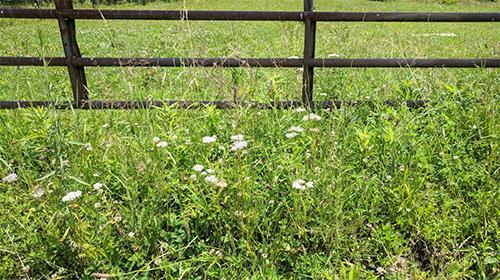 Once the old plants are removed from the garden, it is time to go to work on the weeds. The perimeter of the ground growing plot must be tended to as well. The same bugs, fungus, and plant diseases that would thrive on your decaying garden plants will take up residence in the weeds.
Once the old plants are removed from the garden, it is time to go to work on the weeds. The perimeter of the ground growing plot must be tended to as well. The same bugs, fungus, and plant diseases that would thrive on your decaying garden plants will take up residence in the weeds.
In fact, any grass that gets overgrown around your garden or brush along a forested edge likely harbored many of the same destructive insects you battled all summer.
Ideally, you should keep a three-foot-wide swatch of grass around the entire perimeter of your garden cut down to the dirt all year long to deter destructive insects and ground hornets.
Once the weeds are removed, spread a natural insecticide in the area to kill any bugs still roaming about – before they can go lay eggs or go underground.
Garden Perimeter Tending
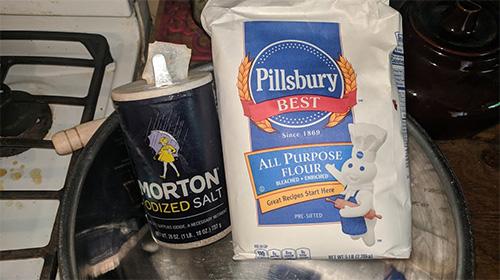 I plant marigolds around the perimeter of my growing plots to deter insects, deer, and rabbits because they loathe the smell. Mums are more fall hardy and can serve the same purpose to some degree.
I plant marigolds around the perimeter of my growing plots to deter insects, deer, and rabbits because they loathe the smell. Mums are more fall hardy and can serve the same purpose to some degree.
Save your eggshells and crush them to be spread around this cleared perimeter from spring through the late fall to thwart crawling insects. The eggshells scratch or cut the underbelly of crawling insects, convincing them venturing any further in the same direction would be a really bad idea.
Spreading diatomaceous earth (agricultural grade DE only) and – or a 2 to 1 ratio of standard table salt and flour in the cleared perimeter will also kill bugs – good and bad alike, unfortunately. The insects that ingest either the DE or salt and flour mixture will become dehydrated, swell up, and ultimately burst. If insects are exposed to either substance topically, they will also become dehydrated and die, the process will just take longer.
Tilling
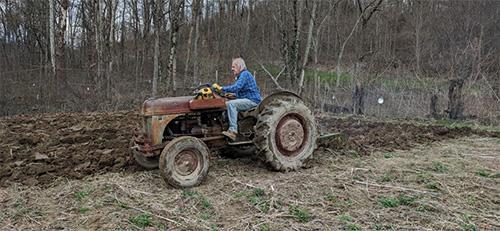 Turning the dirt in the garden will not only mix any quality organic matter (compost) into the soil that you apply first, it will also loosen up dry or crusty soil to increase the infusion of moisture, keeping it far healthier.
Turning the dirt in the garden will not only mix any quality organic matter (compost) into the soil that you apply first, it will also loosen up dry or crusty soil to increase the infusion of moisture, keeping it far healthier.
Tilling the garden during the fall can unearth the eggs that insects have laid. When the eggs are exposed to cold temperatures, they die. You should till your garden once after the plant clean up and weed removal has been conducted and again right before you first hard frost.
It is possible to till a garden too deeply or too often. Limit the fall tilling to only twice and go no deeper than one foot down.
Related: Bury An Egg In Your Garden Soil, What Happens Few Days Later Will Surprise You
Soil Maintenance
Whether or not you decide to till the garden, you should treat the soil to refresh it after the spring and summer growing season. If you add valuable nutrients to the garden soil during the fall months, they will have time to process and break down properly. Often, when you tend to the soil in the fall, you will not have to repeat this stage of garden prep during the spring.
There are two distinct advantages to enriching the soil in the fall instead of the spring:
There is no change in the compost – especially if it contains manure, will be too green and scorch your young garden plants.
Spring is typically wet to extremely wet, depending upon where you live. If your region receives a lot of rain, getting into the garden to apply composting material before you can plant could greatly push back your food cultivation plans.
Recommended Fall Soil Maintenance Materials
- Organic Compost – homemade or purchased
- Rock Phosphate
- Livestock Manure
- Kelp
- Agricultural Lime
- Bone Meal
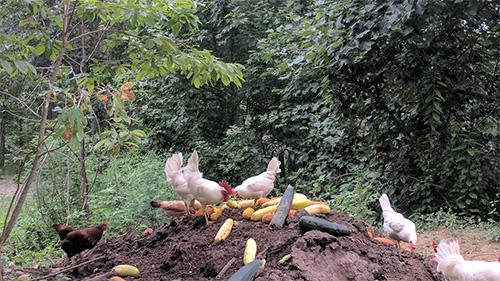 Some folks cover their treated garden rows or raised beds with sheets of clear plastic to protect the recently applied composting material from potential rain, wind, snow, or ice. Depending upon your climate, you can leave the clear plastic on until the early weeks of spring before it has to be removed. If you go this route, plan on lightly hoeing the garden after removing the plastic sheets.
Some folks cover their treated garden rows or raised beds with sheets of clear plastic to protect the recently applied composting material from potential rain, wind, snow, or ice. Depending upon your climate, you can leave the clear plastic on until the early weeks of spring before it has to be removed. If you go this route, plan on lightly hoeing the garden after removing the plastic sheets.
Cover Crop Planting
Planting cover crops will not only help your garden soil stay in top-notch shape, but it will also provide you with useful food for your table or the barnyard. A cover crop helps prevent soil erosion, deters weed growth, enhance soil quality, and even increase soil fertility. These crops can also help deter destructive insects and plant diseases.
Growing hardy red winter wheat is perhaps the best low maintenance cover crop you can grow. The wheat can be harvested for the berries which can be ground into flour or baled to make straw.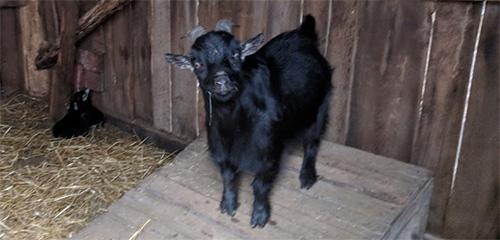 Even if you have only a small growing space and do not keep livestock, the straw can be used to cover seeds broadcast into the garden to protect them from birds, rain, and wind during the spring planting season.
Even if you have only a small growing space and do not keep livestock, the straw can be used to cover seeds broadcast into the garden to protect them from birds, rain, and wind during the spring planting season.
Best Fall Cover Crops Recommendations
- Red Winter Wheat
- Crimson Clover
- Winter Rye
- Hairy Vetch
- Oats
- Winter Peas
The cover crops you plant in the fall will continue to grow robustly until the first weeks of spring. You must cut down or till the plants into the garden soil to thwart their growth. Fall cover crops typically need to be planted in mid-October, depending upon your agricultural growing region. The general rule of thumb when planting cover crops is that they must be in the ground at least two weeks to one month before your first hard – killing frost.
The decomposing cover crop will usually increase the nitrogen levels in the soil. Make sure to cut out or till the cover crops about three weeks before you plan to begin planting in the spring to better prepare the ground to accept new growth.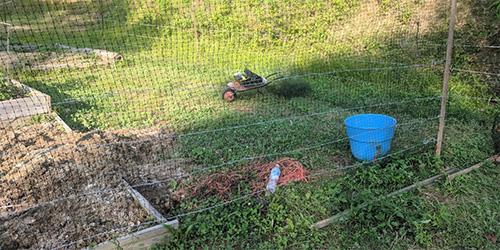 The cover crops will attract deer to your garden, especially the red winter wheat and the clover. The deer tend to dislike oats somewhat, but will still likely venture into your cover crop area during the cold weather months when food is sparse. Protecting the garden year-round from deer using electric fencing, barbed wire, chicken wire, hardware cloth, bird netting, or snow fencing is highly recommended.
The cover crops will attract deer to your garden, especially the red winter wheat and the clover. The deer tend to dislike oats somewhat, but will still likely venture into your cover crop area during the cold weather months when food is sparse. Protecting the garden year-round from deer using electric fencing, barbed wire, chicken wire, hardware cloth, bird netting, or snow fencing is highly recommended.
Related: Winter Sowing Technique That Guarantees The Best Crops
Mulching
Mulching the cleared garden during the fall and winter can also help protect the soil from nutrient loss, weed growth, soil erosion, and water loss. You can mulch the garden in the fall even if you are planting cover crops.
The frequent freezing and then thawing of the ground during the fall and early spring can be rough on the soil – but still, allow weeds to flourish. The roots of even the hardiest of cover crops can also suffer ill effects from being subjected to such environmental changes.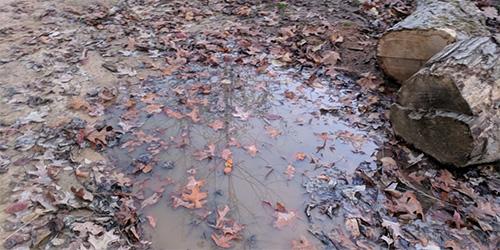 The mulch around the base of the cover crops and around the growing plot aids in the regulation of ground temperature and moisture levels. Such regulation can vastly ease the impact of environmental changes have on the soil. A mulched garden is significantly helpful if you are experiencing a rather cold spring and late frosts, as well. The roots of your vegetable plants will stand a far less chance of being shocked by the transition from a seed pot into the bare earth if it has been mulched all winter.
The mulch around the base of the cover crops and around the growing plot aids in the regulation of ground temperature and moisture levels. Such regulation can vastly ease the impact of environmental changes have on the soil. A mulched garden is significantly helpful if you are experiencing a rather cold spring and late frosts, as well. The roots of your vegetable plants will stand a far less chance of being shocked by the transition from a seed pot into the bare earth if it has been mulched all winter.
Best Fall Mulch Recommendations
- Fallen Leaves
- Sawdust
- Pine Needles
- Grass Clippings
These seven simple winter garden preparation tips will require extra work long after you pack away your Mason jars and bushel baskets, but taking advantage of the traditional growing season downtime can lead to an epically successful harvest the following year.
You may also like:
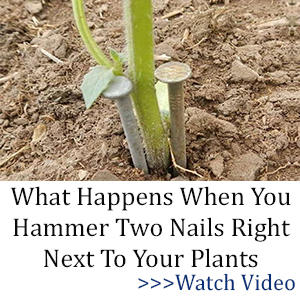 18 Reasons to Stock Diatomaceous Earth for Survival
18 Reasons to Stock Diatomaceous Earth for Survival
I Used to Cut This Driveway Weed. Not Anymore! (Video)

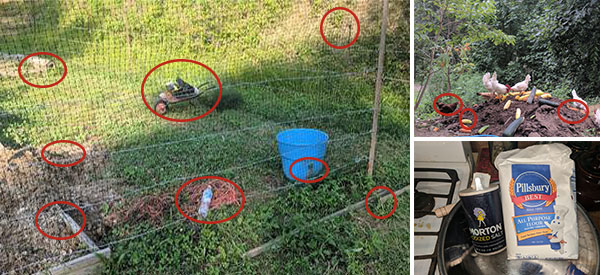





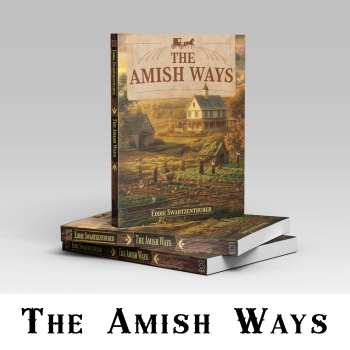

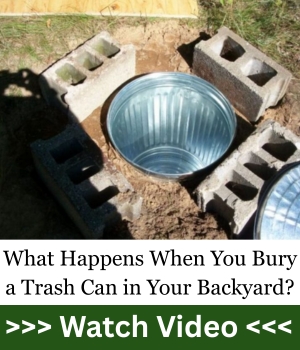






Always a pleasure Claude. Thank you, Sir. From My Family and I, to Your Family and You we wish you a Plethora of Blessings for all the Good that you do.
HAPPY THANKSGIVING!
The extant of preparing my garden for the winter is,” see you in the spring!!”.
This year I’ve decided to do my entire 24’x36′ garden plot as a no till garden.
I’ve placed cardboard over the entire thing then a layer of leaves then another layer of green scraps then more cardboard.
I plan to build up the layers about 2′ thick.
By the time all the rain and snow of 2019 is over and its spring of 2020, it all will be mashed to the ground.
All I have to do is put stakes in the ground and tie guide strings (I like straight rows) then take a small pole and poke a hole along the string and place the seed in and cover with a bit of dirt.
Don’t have to worry about weeds either.
Once the garden is done producing for the year just start the cardboard procedure again right on top of the dead plants.
Please write an article and let the rest of us know how that worked for you. Also, “Southern” tells us below the Mason-Dixon Line, but not much more. Nothing more specific than “Northern Tennesee; Southern So, Carolina; Eastern Georgia — would be a sufficient identifier.
I am confident readers of this site would find it most interesting, success or not.
LCC, I’m in North Carolina.
I’ll let y’all know how the garden turns out, I’m hoping it does me proud, I’m getting to the age where I don’t feel like fighting that tiller plow anymore.
TheSouthernNationalist,
Here we call this a lasagna garden and we’re doing pretty much the same thing. We order things from Amazon and this is a great way to dispose of all of those corrugated cardboard boxes without just burning them.
@The Ohio Prepper, I’ve heard it called that as well but I didn’t remember that name when I made my post.
Lets hope it works for both of us!
TheSouthernNationalist
The lasagna garden method has worked well for us for years, with our big problem the past two springs being way to much rain.
The only upside is we don’t garden or farm for a living, since many of my farmer neighbors are having really dicey times in recent years because of the wet spring weather.
I can understand that, all that wet weather is hard to deal with.
Hopefully 2020 will be a good year for crops and blessings.
SN: Be blessed in 2020! We had a bad year here, as well, but the rains stopped in March and forgot to come back till mid-September. Fall and winter seem to be making up for it, so the brush ground will produce well.
I used cardboard over mulch and more mulch on that in a few beds. A sister in Penna loves the stuff, but she has a slug problem without it. It’s good insulation for the soil and the nightcrawlers eat it up, making her sandy river bottoms soil better.
When in Ohio, we had a flood year and I wound up dumping loads of leaves on the garden and planted in that. Between the beds, the clay was saturated and the farmer lost acres of wheat to the rain. He asked how the hell can I have a garden when everyone’s drowned? I took a pitchfork and lift the leaves. Nightcrawlers were in the leaves, but they had come up from deep in the soil in the spring leaving holes. He watched water and bits of leaves flow under the fork and down into worm holes. Then looked at the wheat, drowning in the field. “We just tiled the damned field last fall,” he said, shaking his head. “And you only use leaves?” Yep. Next year, it droughted, but the soil held plenty of water while soy beans in the field dried up. The year after, he sold his interest in the farm to his family and put a downpayment on a quarter section farm to go natural. Like Dr. Carver said, God doesn’t make mistakes. Put the black back in the soil and farmers will again be wealthy, as they were in generations past. niio
That black soil is black gold when it comes to farming, you are 100% correct!
Blessings to you as well for 2020.
Will the salt keep your plants from growing, my thoughts it would kill young plants?
You are correct John if you get too close with that salt and it gets to the root system it will kill the plant.
In the old days, before people understood minerals, farmers would buy sea salt to spread over fields. A little goes a long way. Since then, chemical farming caused a loss of essential micronutrients like zinc and iodine in the soil. But, if you have a slug/snail problem, a sprinkle of salt on each kills them. earthworms don’t like it but can get away fast. rain will leach it out. I live in the desert and we have enough for the plants (all plants need a little sodium). It’s things like zinc and iodine that are gone and have to be used–and with caution, always. niio
It really depends on how cold your winter gets. Ours nearly always has days in the single digits and often temperatures below zero. We’ve already experienced 3.5° and winter doesn’t even arrive (officially) for another 26 days. Many days in the single digits or below zero will kill about all of the bugs and their larvae, reaching into the soil at least 18-32 inches here.
Our garden is 50-100 feet from any small forest with the property in between mowed close, and this summer we didn’t battle any insects. It may have been from the deep cold last winter and soggy wet this spring.
What do you call natural? How about some suggestions?
I’ve never seen deer do anything with marigolds except eat them; but, they might work well for insects, especially if companion planted in the rows with your crops.
Our eggshells go into the compost bin.
The DT works well; but, the salt and flour just seems to make a mess with the first rain or melting snow.
The plastic goes over the cardboard and is weighted down. In spring it’s removed and what’s left of the cardboard is tilled in. On warm days, the plastic can act like a green house, significantly heating the soil and the organic material under it, often killing seeds from weeds or eggs from insects.
Cover Crop Planting
You have a good list; but, you need to add buckwheat as a spring cover crop.
As a cover crop, buckwheat can be planted as soon as the soil is warm enough for seed germination, at least 55°F/12.8°C. It will germinate within days and begin to flower in about 4 weeks, proving an excellent source of nectar for honeybees and native pollinators. as well as serving as a good Thrip trap crop.
You may be wondering what is a Thrip trap?
I didn’t know either; but, it inhibits Thrips as do Marigolds.
It turns out that according to Wikipedia, Thrips are minute, slender insects with fringed wings and unique asymmetrical mouthparts. Different Thrips species feed mostly on plants by puncturing and sucking up the contents, although a few are predators. Approximately 6,000 species have been described.
Something new I did not know; but, I suspect I’ve seen some of those species.
Most years Thrips aren’t a problem in my area, but maybe one in ten years will be a bad thrip year and they damage everything. They are so tiny and their population explodes so fast that they blow everywhere on the wind. Make a tiny mark on a white sheet of paper with a sharp pencil, that is what a thrip looks like. Shake a discolored flower over that white sheet paper and you’ll likely see the tiny little monsters on it. Grrr…
these are good tips on how to garden ill have to try it
I don’t till, but follow the old-fashioned, now ultra modern method of mulch and cover cropping. right now, turnips, black radishes, and Indian rushpeas (a native legume) cover any thin places in the mulch. In late winter/early spring (mid-Jan here) garbanzo beans go in and the rest it cut off with a hoe to rot and create humus in our adobe/gravel soil. A lot get harvested, but most isn’t. The best plants go to seed for next fall’s crop. By the time we plant maize, most of the garbanzo beans will have been picked as green peas and the plants cut off. They’ll regrow a little, but hate the heat and die. Garden peas will go to seed for next fall.
Summer isn’t good here, too hot, dry, and windy, but local varieties often produce all right. Nopale pads (prickly pear leaves for pickling), watermelon and winter squash, moringa, amaranth, and a few more things will grow in the heat, but rarely produce till the monsoons start. Most of the ‘garden’ producing is out back in the brush. Mesquite and some plants, later, after the monsoons begin, tun fruit (prickly pear fruit) turn red and dark, or pink, and from September to October, the kitchen look like a reenactment of the Texas Chainsaw massacre thanks to the red juice from the fruit. Fresh tun juice is a concentrate, and has to be mixed 1/2 cup of juice to up to 10 cups something else.
Mesquite beans are stored in burlap sacks and hung from the porch ceiling to finish drying. They need a blender to grind them. They have so much sugar, they gum up the flour mill.
By the time the first crop of mesquite is ripe, and new blooms are there, garden beds are making up for summer’s lethargy. Amid all this, neighbors want help picking dates and olives, brush and palm fronds hauled away, bags of grass clippings and weeds, and the garden welcomes all donations.
I just finished a new bed, this one for an apple tree. 3 feet deep, 3 wide, and 16 feet long. I took out ten wheelbarrow loads of caliche (lime) to use for natural concrete, and replaced it with brush and logs, and so on, then back-filled with the remaining dirt (AKA adobe and fine gravel). This is an old, local version of hugelkultur, and once the wood begins to decay, will need nothing more than mulch to shield the soil from the sun for at least ten years. Ya see, I’m a lazy gardener. I like to dig out all the bad stuff, and make good topsoil, so then I won’t have to work hardly a-tall 🙂 And, of course, the next trench is already being planned. And the water catchment tanks (in-ground), and the compost pit-gray water recovery has to be finished, but that has to wait till spring, now…But, winter gardening is a challenge and fun. no bugs, lots of plants, and plenty to share. Oh, yeah, and I have to finish planting the Indian ricegrass. Drag the rake over the ground, scatter seed, rake it back in, and leave it alone. niio
Claude and all our family on Preppers, Happy Thanksgiving!
Gathering fall leaves (usually already bagged by your neighbors) and then double/triple mowing them is a good idea.
Place a thick layer over your garden soil and till them in.
Be careful though with WHAT leaves you are getting and using.
Walnut and those in the walnut family can inhibit plant growth.
You need to do all this in the fall.
Also, tilling in the fall and again in the spring can kill many insect eggs and larvae.
Tilling is what got rid of the Mormon Crickets that used to plague the west.